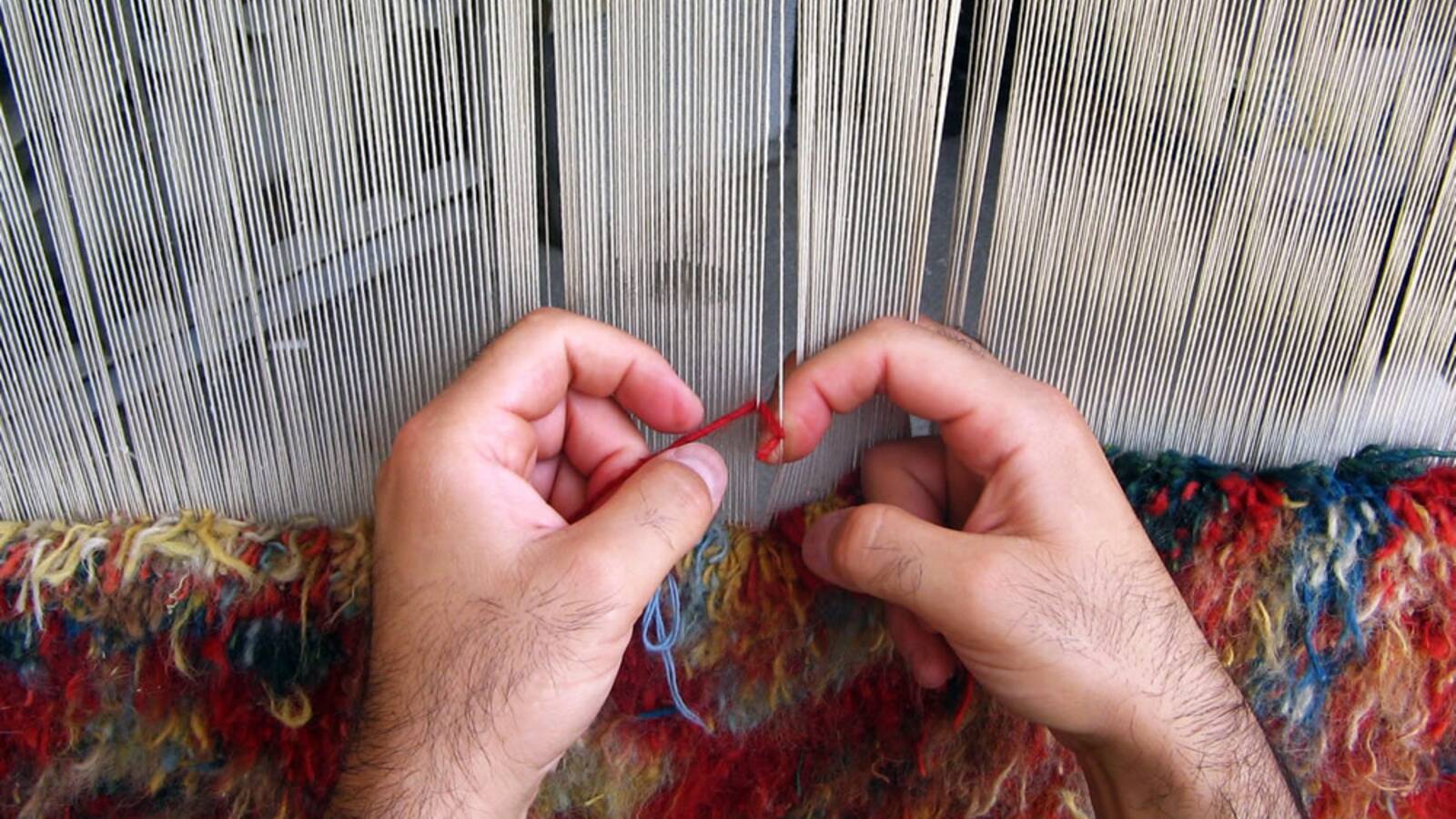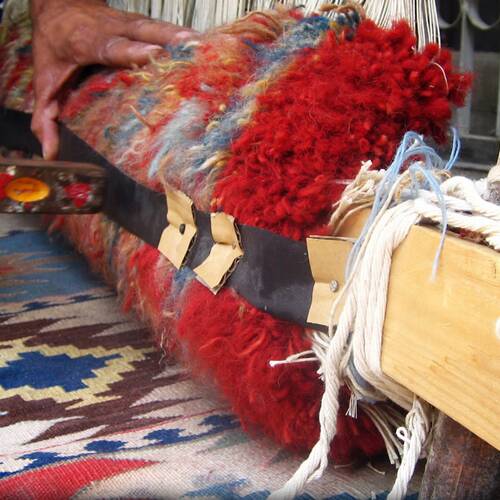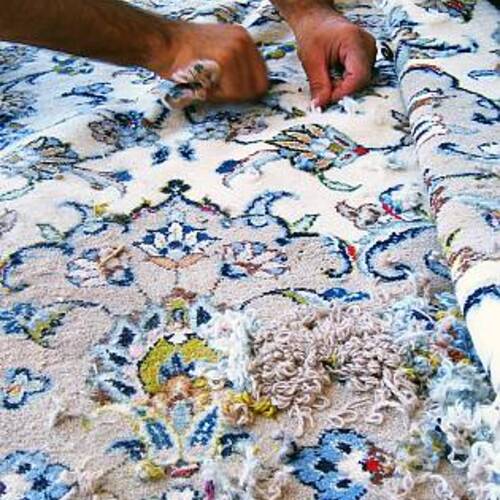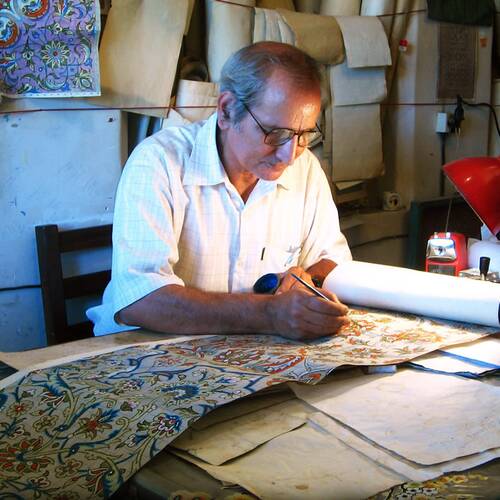
Traditional Skills of Carpet Weaving in Kashan
Kashan city was the center of carpet weaving in Shah Abbas period and many carpet weaving workshops were established in this city based on his command. Silk, silver and golden carpets which are best-known as Shah Abbas carpets are attributed to this city. The history of Kashan carpets can be assessed in two periods: a golden period and a period after approximately two centuries of the closure.
The oldest carpets of Kashan are related to 11th HJ, the century which is considered to be the golden age of Kashan industries. The delicate and elegant texture is the main feature of Kashan carpets in so far as their patterns seem to be embossed. The field of many carpets has crimson color (Zamin-e Laki) with dark blue borders. Although Kashan carpet weavers produce today different sizes of carpets, the reputation of Kashan carpet is mainly for its Sajadeh carpets (prayer mat carpet). Kashan carpet weavers have adopted the Isfahan patterns among them the followings are more important: Toranj (medallion), Mihrab (alter), Goldani (vase), Derakhti (tree), Shekargah (hunting ground), Boteh Jegheh (paisley motif), sajadeh (prayer mat), panj par (star).
Knot in Kashan Carpet is asymmetric (Persian Knot) and the wool used is Marinos. About 120 years ago there was a man named Mola Hasan who imported Merinos wool in Qajar period; he turned the remained wool into a carpet through his wife, after industrial stagnation. Afterward, using this kind of wool has become customary and that is why the handmade carpets of Kashan have a soft and velvet-like surface. Dyeing wool is one of handicrafts related to carpet weaving and it is carried out using herbal pigments; interesting in this respect are pomegranate shell, walnut shell and grape leaves.
Abbas Kashani has written about the colors of Kashan carpets in this way: "Kashan carpet is like the paradise of colors; its colors are like the sound of music". In 2010, Carpet of Kashan has been inscribed on the UNESCO Representative List of the Intangible Cultural Heritage of Humanity.


